"Resistance and change often begin in art."
Yes, we still have to protest this shit. With inspiration from Guerilla Girls, Ursula K. Le Guin, and more.
I have a request!
Are you an artist who makes a chunk of your income during the holiday season? I am working on a piece about what holiday season looks like for artists who make and sell things during the holiday season.
Is this you? I’d love some input on the financial realities of this upcoming season. If you’re willing, please fill out this form. And feel free to pass it along to other artists you know!
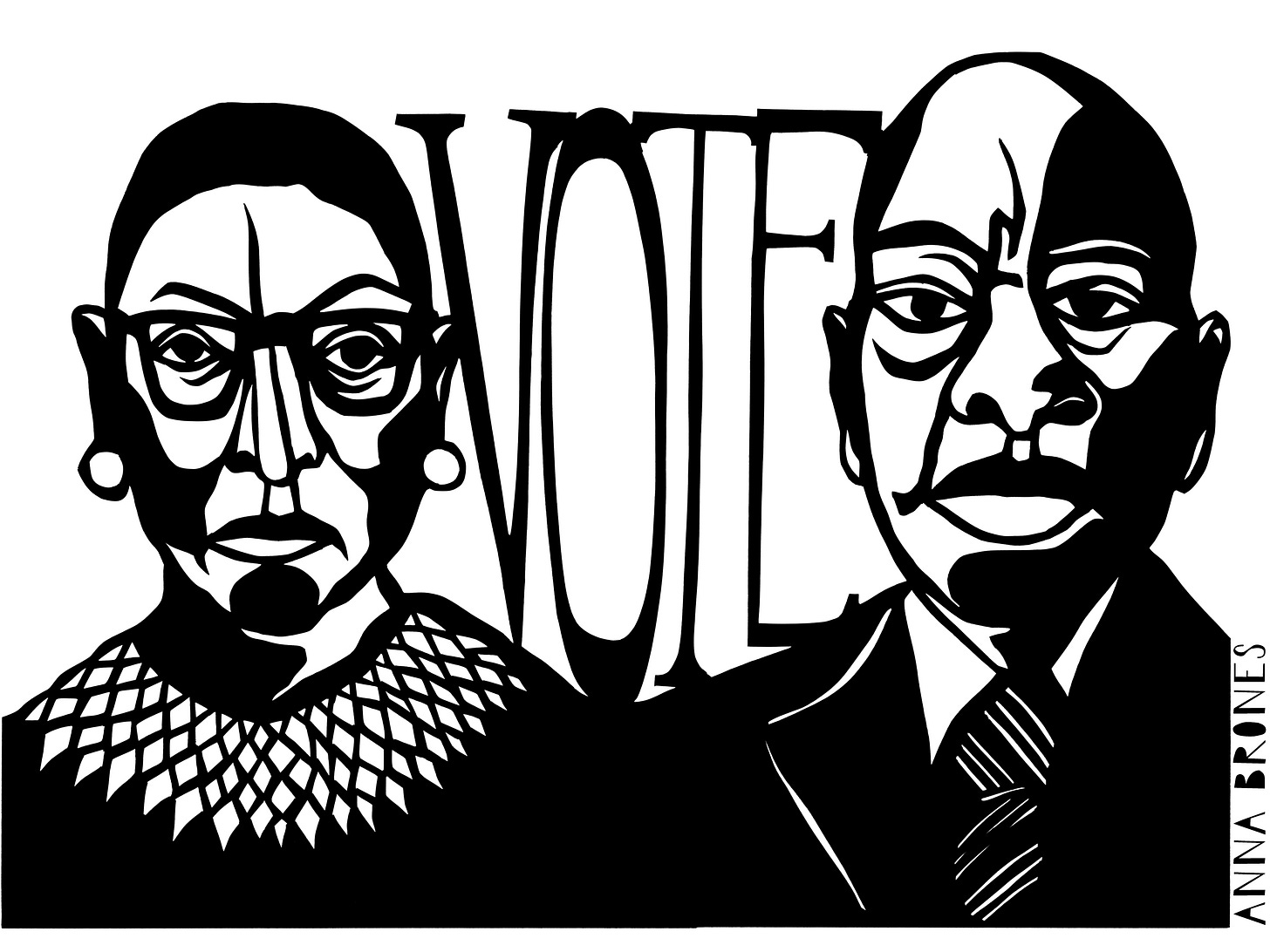
Hello friends,
I’m back home after a couple of weeks in the U.K.
Oof, what a time to return. Honestly, I didn’t even want to write about the election this week, because well… what else is there to say, and wouldn’t it be nice to give energy to other things? Yet it felt impossible to write anything but.
After a cup of coffee yesterday morning, I sat down and filled in my ballot (thank you Washington State for mail-in voting!). I’m usually the kind of person who pops their ballot in the ballot box the day of the election, but this time around I just wanted to be sure that it was done.
To say that the U.S. election is taking up a lot of our brain space would be an enormous understatement. Even when you try to focus your energies on something else, it inevitably sneaks in, permeating every moment. We’re hanging in that space of the unknown, holding our breath to see whether or not we choose democracy or something far more sinister and dark.
But if we’re going to talk about election anxiety, let’s at least involve some art and creativity, ok?
I went to the Tate Modern while I was in London this past week. The first time I visited that museum many years ago, I bought the Guerilla Girls “The Advantages of Being a Woman Artist” poster. It hangs on the wall in my studio as a constant reminder. So many perks!!
Seriously, it almost makes me want to get a gorilla suit or mask.
To my delight, Guerilla Girls had an entire room devoted to their work when I was at the Tate, the walls plastered with posters from various years. Looking at them all at once, I realized how hard it was to know whether many of the posters are new or vintage.
Messages from several decades ago still feel incredibly timely, past realities of inequities and injustices still very much a part of our present-day reality.
“Missing in Action” was made in 1991, and it’s clear we haven’t gotten very far.
Then there was this 1985 poster about the gender pay gap in the art world.
A lot of things can change in four decades, in this case: not so much... According to statistics shared by National Museum of Women in the Arts, almost half of visual artists in the United States are women, and they earn about $.75 for every dollar made by male artists. That gets worse with age—for women artists between the ages of 55 and 64, that number drops to $.66 for every $1 earned by men. Not to mention how much the AI robots are making.
Then there was the one poster that I couldn’t look away from: “Republicans do believe in a woman’s right to control her own body.”
Made in 1992 for the Republican National Convention, the bold header was followed by a list that starts light and superfluous and ends in a very dark place (I’m not sharing the visual here because it’s a little graphic, but you can see it here). 1992 was also the same year that Guerrilla Girls made a poster about returning to “traditional values on abortion.”
Same fight, different decade.
The slogan that sometimes pops up on protest posters (and makes its way around the internet) came to mind: “I can’t believe I still have to protest this shit.”
***
Sitting on a London park bench, I had a long chat with an author friend about how many of her writer acquaintances have felt in a multi-year funk. We’ve been stuck. Lethargic. Craving the days when ideas abounded, when the work flowed.
We talked about the many reasons for feeling this way. For one, the pandemic did a real number on all of us and we’re still coming to terms with it. Secondly, there is so much going on locally and globally that our nervous systems feel fried, creative energies weakened. We all feel exhausted—no wonder we sometimes want to tune the rest of the world out, just focus on our projects and not give the exterior world an outside thought.
But we’re artists. It’s hard not to be attuned to what’s happening around us, to not feel, to not respond. To not see the reality around us and ask the question “why is it difficult to have a world in which people are taken care of, in which empathy presides over fear, in which we lead with humanity?”
I can’t believe we still have to protest this shit.
Being in a big city, I had been trying to cram in as much art as possible, and I also took the time to walk through the annual Frieze Sculpture exhibition in Regent’s Park. The first sculpture I saw was one by Leonora Carrington. I hadn’t even realized that Carrington had done sculpture, and was immediately drawn to the mythical looking sculpture, seemingly part bird, part human. As the representing gallery wrote about the piece, “pursuing the freedom of imagination and spirit and ultimately the joy of life.”
A few days earlier I had seen some of the work of Franciska Themerson, an entirely new-to-me artist. I watched a couple of her experimental films from the 1930s, which she had made with her husband Stefan Themerson (it was assumed that they were lost during WWII, but fortunately they’ve all been found and restored). The creative duo were pioneers of Polish avant-garde cinema, their experimental work challenging the fascism that was making its way across Europe, and which inevitably forced them to flee their country.
The films did in fact feel incredibly experimental, a bit strange, a bit out there. Imagine how it might have felt to watch them back in the 1930s, how they might have been perceived by a political movement obsessed with control.
Looking at all of this art, I kept thinking about the various artists of this time in history. How they resisted. How they celebrated a freedom of imagination, and how that freedom was seen as so incredibly threatening.
When it comes to surrealist art, it’s so easy to refer to a lot of that work as “weird” or “strange,” even “dark” or “twisted.” But then again, how else could one respond to a reality that was so strange, so dark, so twisted?
How do we respond to our own current one?
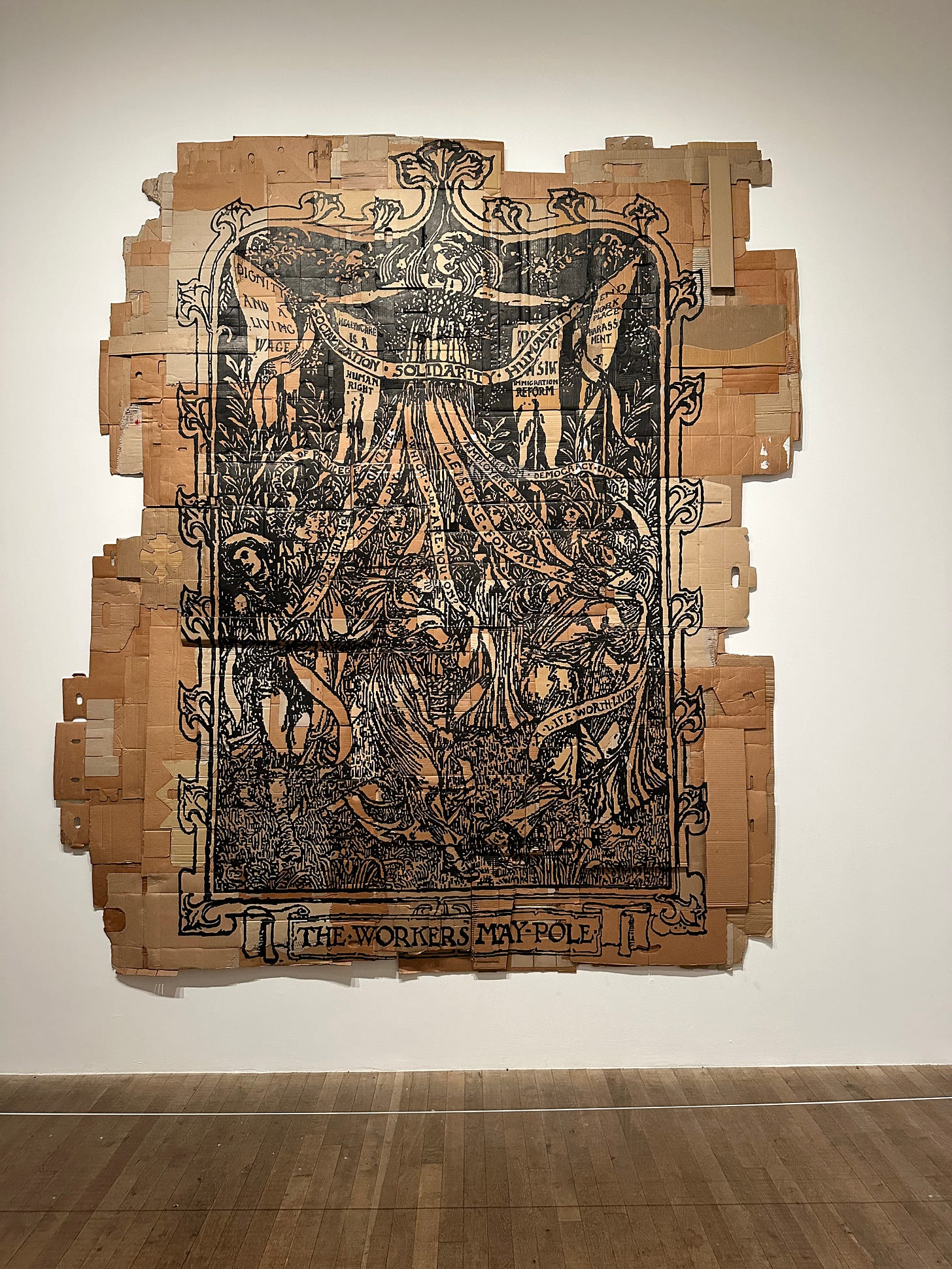
In 2014, Ursula K. Le Guin gave a speech in acceptance of the National Book Foundation Medal for Distinguished Contribution to American Letters.
“Hard times are coming, when we’ll be wanting the voices of writers who can see alternatives to how we live now, can see through our fear-stricken society and its obsessive technologies to other ways of being, and even imagine real grounds for hope. We’ll need writers who can remember freedom — poets, visionaries — realists of a larger reality.”
The speech was given a full decade ago, yet like the Guerrilla Girls posters, those exact words could have be presented today.
Le Guin continues:
“We live in capitalism, its power seems inescapable — but then, so did the divine right of kings. Any human power can be resisted and changed by human beings. Resistance and change often begin in art. Very often in our art, the art of words.”
The cynical view is that nothing gets better, that progress is an illusion, that we’re trapped. That if we have to keep protesting this shit, then it’s because we didn’t do a good enough job the first time around. In that view, we might as well give in. We might as well do nothing.
The more hopeful one is that we artists—we humans—have been standing up and challenging injustices since time immemorial. We’ve done it before, and we’ll do it again. In that view progress isn’t linear, it’s messier, more malleable. We don’t expect it to take a certain course, instead, we take part in shaping it.
Progress is not inevitable, something that just happens. Progress takes ongoing work.
That work requires our words, our actions, our art—and mostly importantly, our imaginations. So that we can imagine real grounds for hope.
-Anna
A reminder that every month 10% of paid subscriptions are donated. This month they are going to support Hurricane Helene relief efforts through the River Arts District and the Craft Emergency Relief Fund,.
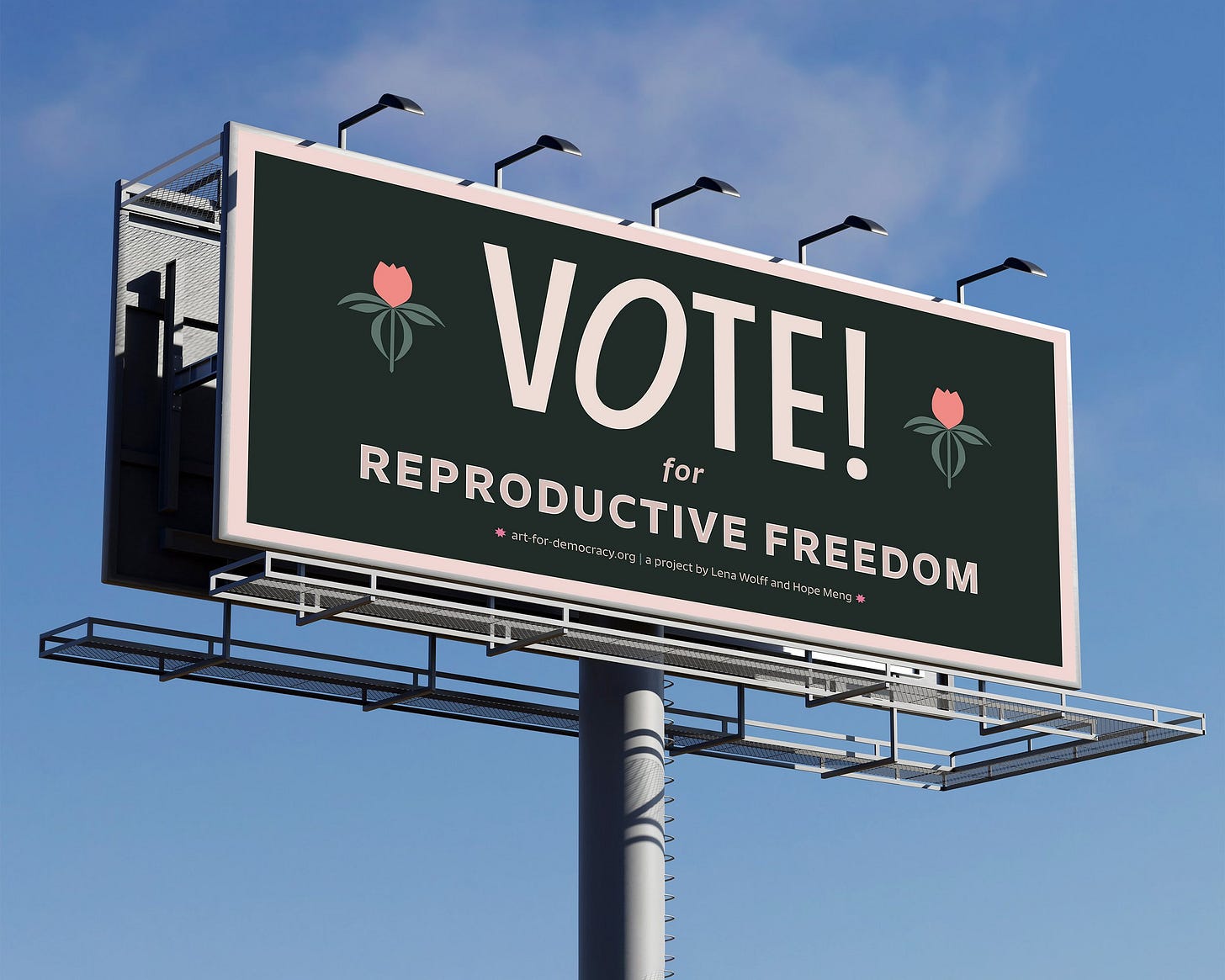
Last month I did an interview with artist
. She is teaching a rock portrait watercolor class on November 6th! I’ve taken this class before and highly recommend.Long ago when I lived in Portland, I used to love going and watching the Vaux’s swifts.
penned a beautiful piece about the experience.I’m always inspired by the art and activism of Lena Wolff. To me, her art is an admirable example of how we weave our values into our creative work. Together with Hope Meng (another great example of an artist combining creativity and activism) they have the Art for Democracy project. There are lots of free posters that you can download if you need a little creative boost to get through election season.
- on being a single-issue voter.
Lọlá Ákínmádé Åkerström’s AfroSwede photo project.
“Gray was a compromise, perfect for a generation that had gotten used to constantly lowering our expectations.”
on the color gray.
UPCOMING CREATIVE FUEL WORKSHOPS
DIVE Writing Group: October - December 2024
The Fall 2024 session of DIVE writing group starts on Monday October 28th!! Gather together with facilitator
and make fall a season of writing. More info + sign up.Wednesday November 13, 5-6:30pm PT: Create+Engage November Session
This is our post-election edition which we’re calling “Continued Action.” No matter what happens with the election, we all know that civic and community engagement is an ongoing process. Just like creativity! We'll have more info on this session soon, but you can sign up now.
If you like getting Creative Fuel in your inbox, I’d love it if you considered becoming a paid subscriber.
Paid subscriptions keep this newsletter alive. Plus we have 24 Days of Making, Doing, and Being coming up in December!
Do you enjoy Creative Fuel? You can support this work by becoming a paid subscriber. You can also order something in my shop, attend one of my workshops or retreats, or buy one of my books. Or simply share this newsletter with a friend!





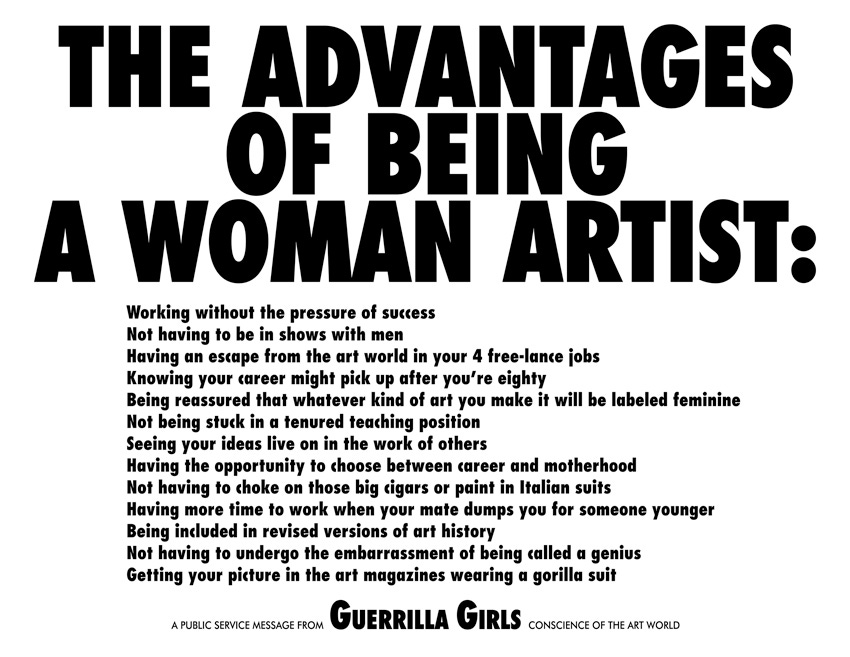
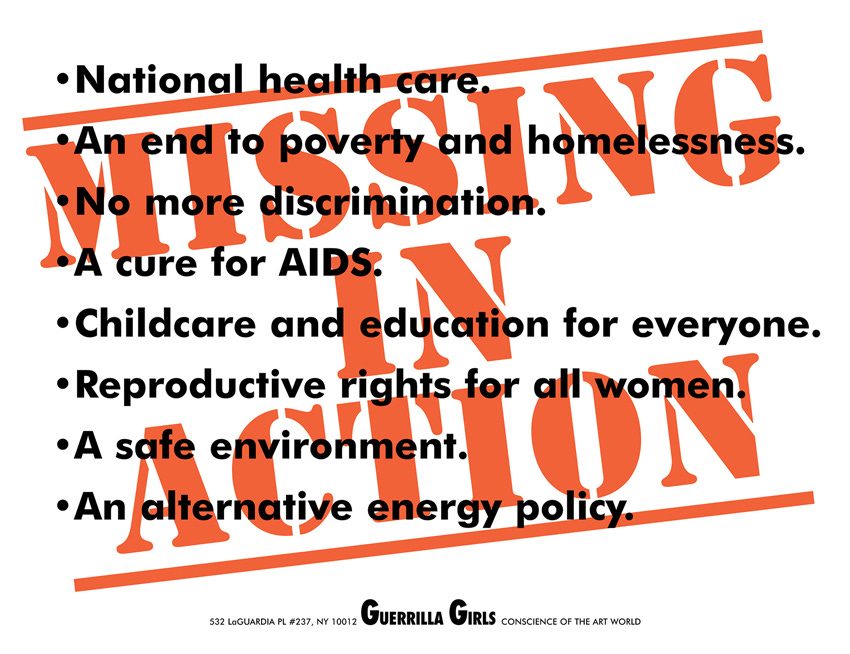
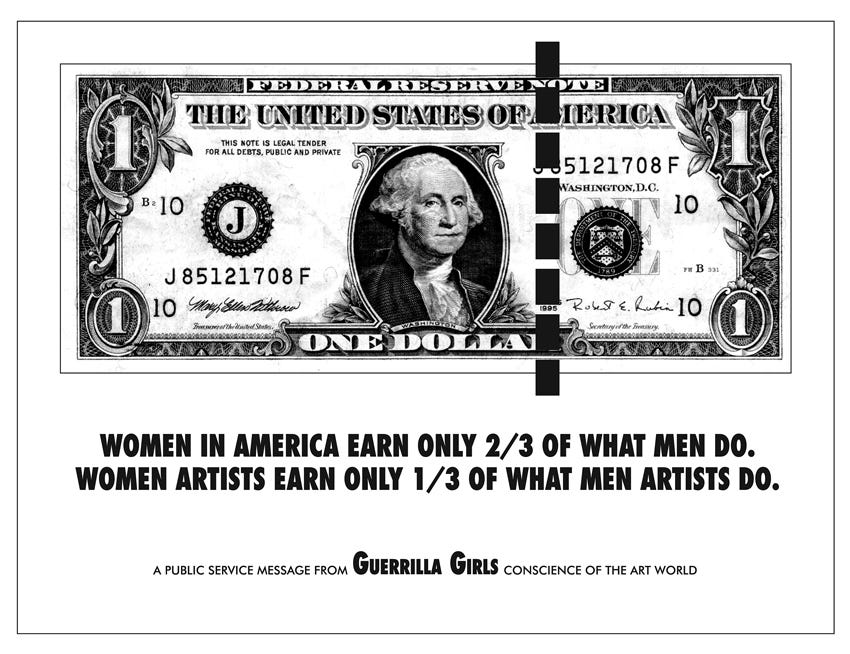
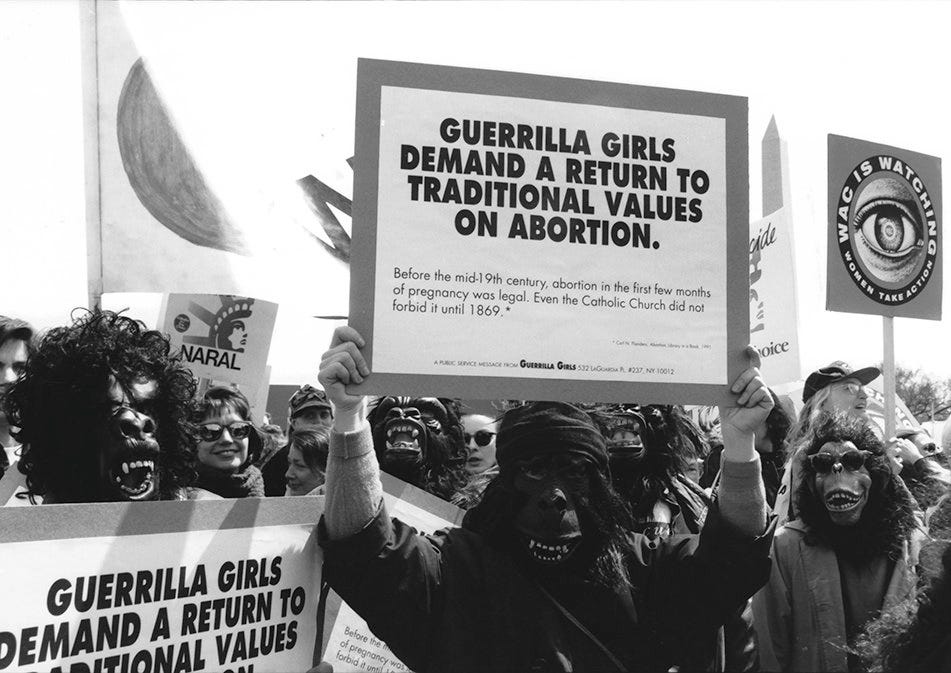
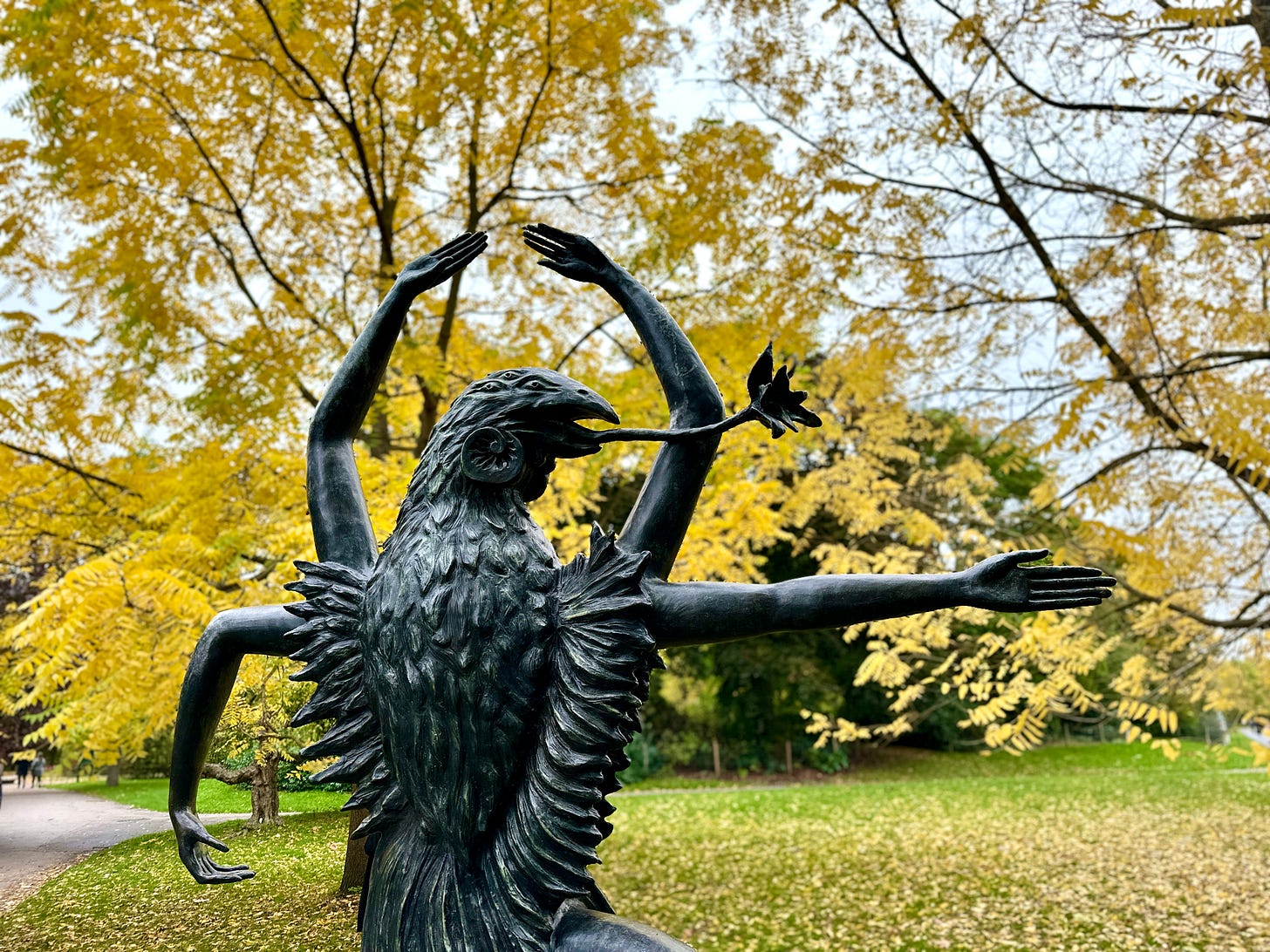


This post filled me with the energetic glee inherent in creative protest— so much more compelling than impotent angst. Thank you!